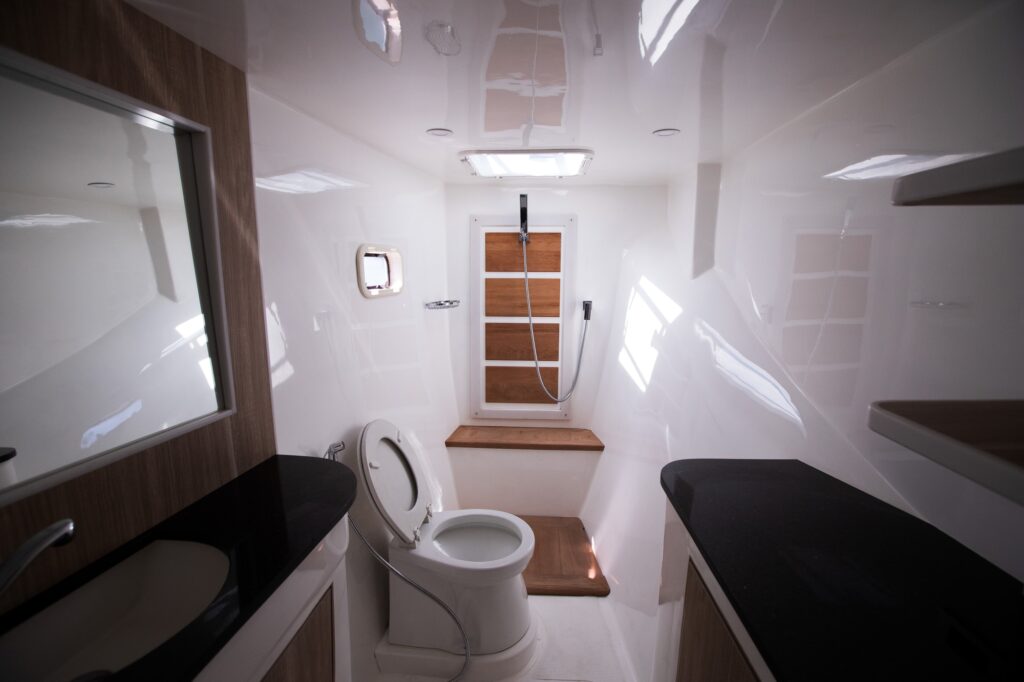
Houseboats can be a great alternative to living in a traditional home. They provide you with a special place to relax and enjoy the water, but they don’t exactly follow all of the same requirements as a traditional home would. Your floating home will need more systems in place than the average home and one good example would be the sewage system. You don’t just flush and forget.
One of the different types of waste comes from your houseboat toilet and into the sewer pipes and tank. They are known as black waste. To make sure that the boat remains habitable, you need to keep your sewage system healthy and functional all year round. One of the main things that you need to know about houseboat toilets – they often don’t have many ways to go about cleaning themselves, other than manually doing it. So before you buy a houseboat, consider the type of toilet system that it comes with.
Table of Contents
What Types of Marine Toilets are There?
There are a few types of marine toilets which you will commonly find on houseboats. Each type of toilet operates differently and there is not one significantly better than the other, it all depends on the type of toilet and the preference of the owner and his guests. Whether is it has a sophisticated treatment fixed system or untreated holding tank to a temporary cassette “suitcase”, you will have to deal with it manually transport it to dispose of. Here are the various options:
Holding Tank (With Maceration or Waste Treatment capabilities)
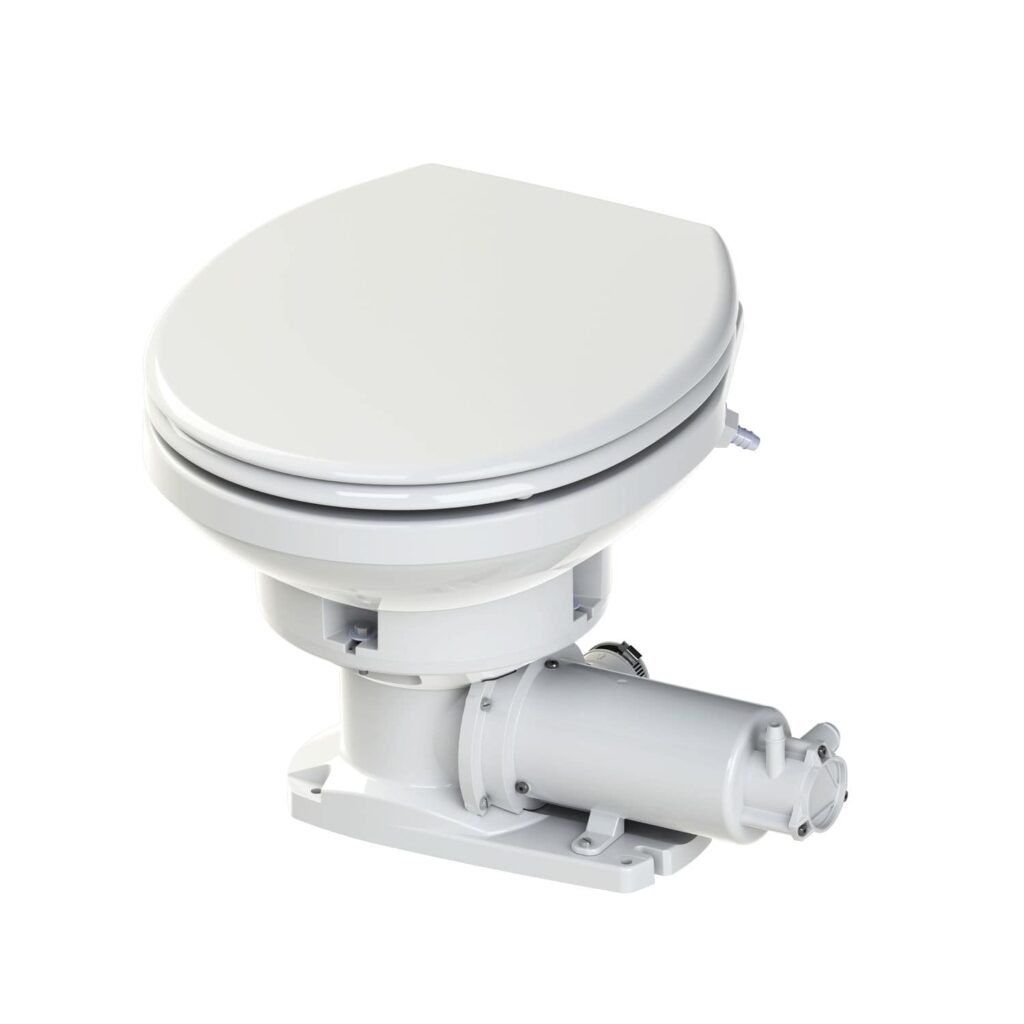
A holding tank is most common on a houseboat because it takes the need for emptying of human waste from toilets. Human waste is channeled to the holding tank by fixed piping where it collects and is then discharged overboard or pump-out stations. These are categorized as Marine Sanitation Device (MSD) type 1 or 2 where black waste is disinfected or treated before it is allowed to be discharged overboard.
This system is more costly to install and maintain but takes off some of your trouble of overflowing and having to constantly clear it on a daily basis. With regular use patterns, you’ll be able to figure out how long it is required to fill the tank and make planned trips to discharge it once it reaches 3/4 full. As much as there is to the benefits, the downsides are pipes choke and bad odor seeping out of the tank that will leave you in a stinking situation.
Holding Tank (Without Discharge)
This system is the holding tank directly connected to the toilet without any maceration or treatment capabilities. It essentially means no overboard dumping of treated and untreated sewage. So, the only way you’ll be emptying your tank is through the pump-out fitting on the deck. This automatically falls into MSD type 3, There are limitations with this system, mainly owing to its simplicity, you will need to find a pump-out station fast when your tank is full.
However, with a proper emptying schedule, you’ll have no problems (overflowing or with the authorities).
Cassette Toilet
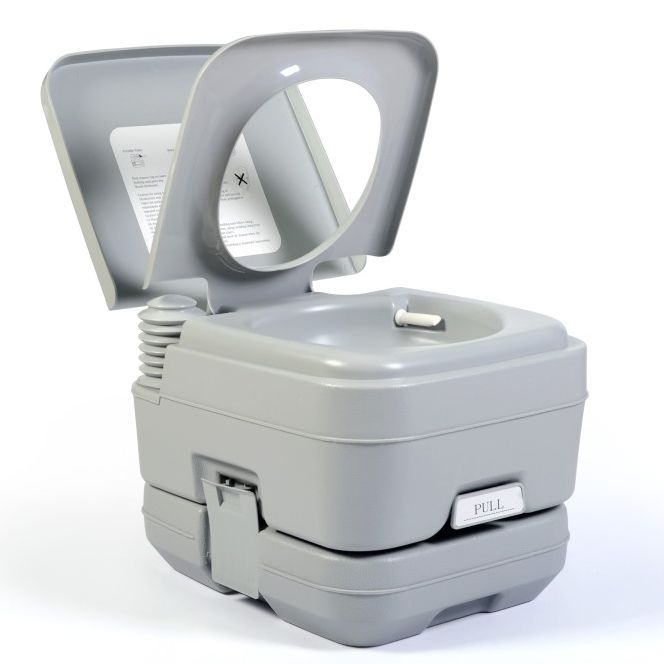
The cassette toilet system is a fairly simple alternative. It looks like a regular toilet fixture. But instead of flushing your waste into a black pipe, it goes into a small storage tank that can be removable and hand carry to the regular toilets for dumping. Cassette toilets are fast, efficient, and relatively easy to install. You also have to option to select the storage tank size, so if you prefer to empty your tank on a longer period basis, a larger tank will be suitable for you.
Porta Potty
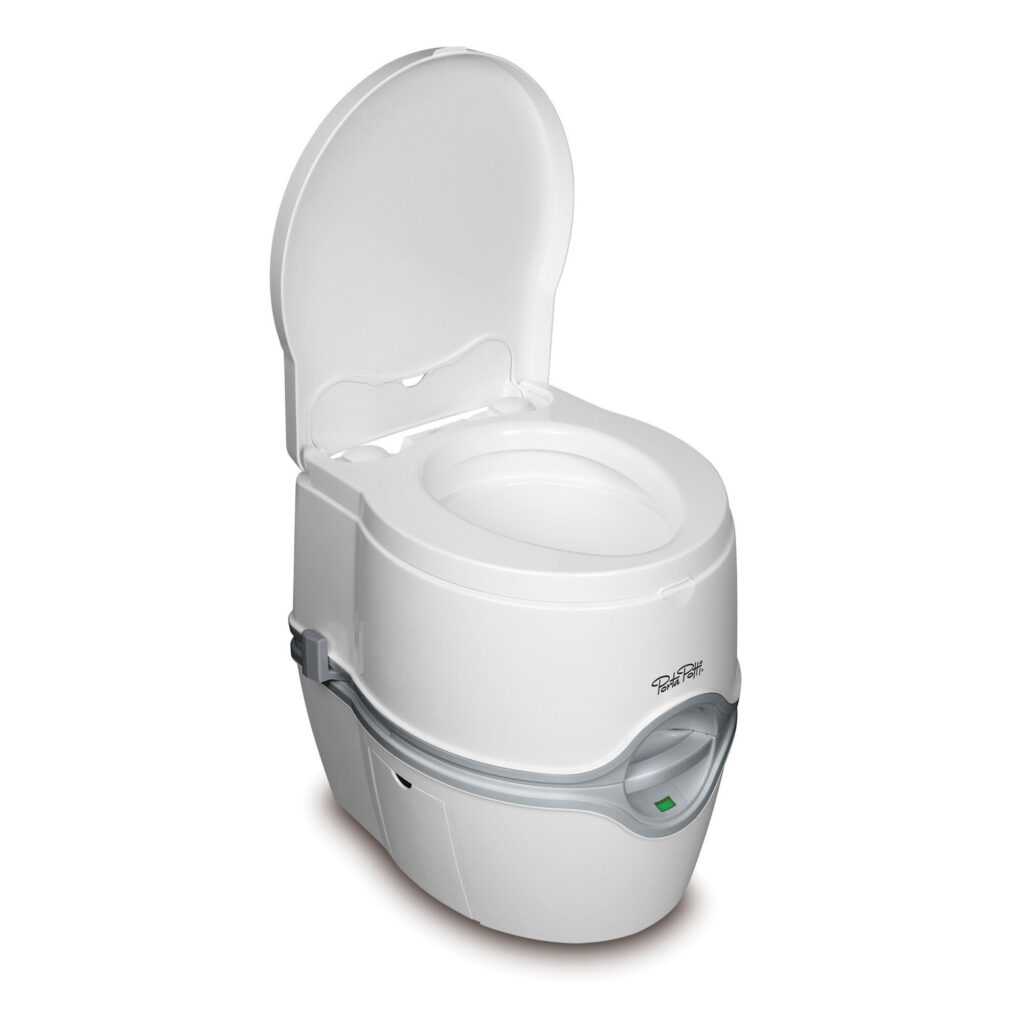
A porta potty is similar to a cassette toilet but the main difference is a porta potty does not need to be permanently fixed. They have a chemical container that will store the contents inside. Simply prep the flushing mechanism with a flush chemical and you’re all set. Then, take a dump, flush the chemical container, and you’re done. After which, disposal it the same way as to how you would for a cassette toilet. Though the smell is a real bummer every time you want to empty it.
Composting Toilet
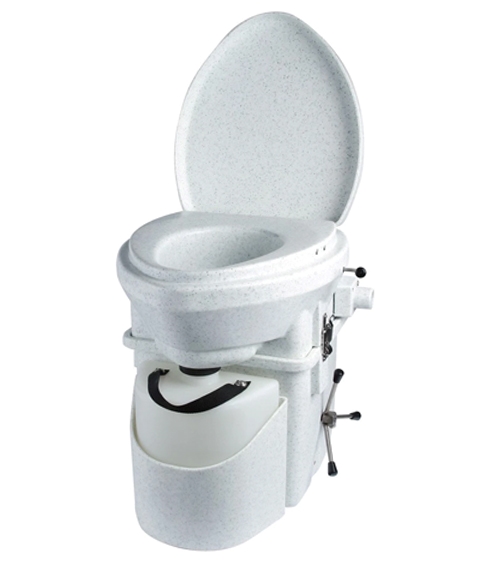
Composting toilets are a great way to reduce the amount of waste on a houseboat. Not only do they help to keep things clean and odorless, but the solids and liquids are also separated for easy handling and disposal. Other advantages include, eliminating the need to maintain your pipes and tank, navigating to the pump-out stations. The best part? The installation cost is a whole lot cheaper!
Incineration Toilet
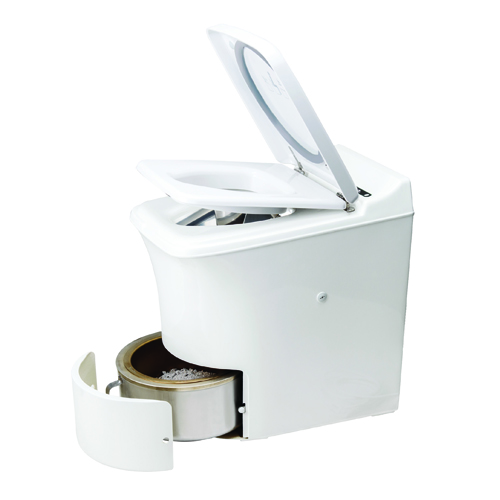
If you have not heard about this type of toilet, incinerator toilets are a type of toilet that burns all human waste to sterile ashes instead of flushing it away with water. They are a popular choice on houseboats, as they can be installed without a septic tank. Incineration toilets are more expensive to operate than traditional toilets, but they are more environmentally friendly and you wouldn’t smell a tinge of foul smell. Again, you do not need to transport to the pump-out stations.
Question: What’s a good head to use on Houseboats?
Answer: The key question you need to ask yourself is whether you need a “wastewater” holding tank. There are plenty of advantages and disadvantages to these options and it depends on your needs. If you don’t have much waste to handle and your location is relatively close to your neighborhood sewer system, porta potty, composting and incineration toilet is probably the one for you. If you cruise frequently have a large amount of waste, you’ll probably want a holding tank.
How Do I Know If My Black Waste Tank Is Full?
If your houseboat is fitted with a tank, there comes a point where you’ll need to empty out your tank. So, how do you know if it is time to do a pump-out? The simplest answer is to check your tank level gauge but I’m not surprised if older houseboats do not have one. Well, if you do not have one, give a few light taps on the tank to feel for it. Jokes asides, here are a few telltale signs and tips:
1. If it is very full, you might experience reluctance of your bowl contents to be flushed. Or worst, it travels up your vent pipe.
2. If you can hear the contents dropping into the tank, you may notice a different sound when your tank is about to be filled. Similar to filling a bucket of water
3. You can choose to install an inspection window at the top of the tank and check it manually every few days depending on the size of your tank
4. A simple calculation will do the trick. Multiply the number of a person by the frequency per person and estimate the days you’ll need to empty your tank.
5. The most reliable way is to install a tank level gauge that can you can monitor at your control panel or an indicator in your toilet. This will give you complete peace of mind and signal you how often you should empty your tank.
Some tank gauges are analog and others are digital. If you choose to install a tank level gauge, you might want to consider an external gauge instead of an internal float switch. Otherwise, once your ‘waste and toilet paper’ jam up the gauge, you’ll dread pulling it out to clean it. If you are interested to find out more about holding tank sensors and devices, you might want to check out this post on the best sensors tested.
Question: How often should you pump out your boat?
Answer: It is best not to wait for it to fill completely. 3/4 tank is the best way to go.
How to maintain a houseboat toilet system?
When we talk about maintenance, it is always good to separate these into preventive and corrective maintenance. As the old saying goes, prevention is always better than cure. You do not want to leave it until it clogs and smells. The longer your sewage pipe, the higher chance of clogging. So to maintain your houseboat toilet system, make sure the route is clear from head to discharge.
Question: Can you flush toilet paper on a houseboat?
Answer: The is no major issue with flushing down some toilet paper but be sure to use biodegradable ones. You might want to educate your family and guest to not overfeed the head with a huge amount of toilet paper and other non-disintegrating materials like sanitary napkins. While some macerating pumps are able to shred personal hygiene products, it is still best to leave them out of the head altogether.
Question: How prevent odor in houseboat toilets?
Answer: There are various ways to prevent foul smells from the toilet. The first way is to give it adequate flushing, especially after “number one”. They contain high concentrations of calcium and sodium that will build up and harden in pipes, shrinking the internal diameter. It is a whole lot worst if you are drawing seawater to flush your toilet. That said, if it has to travel a long way to the tank, flush it well. Though it will fill up your tank faster, it still beats having to perform repair works on these pipes.
Next, feed vinegar or diluted muriatic acid to the head periodically (every month or 2) and flush it again with fresh water.
Lastly, clean the water tanks on a yearly basis. Just as you would clean your freshwater tank, it also applies to the black water tank. Over time, a build-up of solid stinky substances will collect in your tank, making it a sweet place to harvest bacteria. That, the bacteria is the leading cause of the smell.
If you follow this routine religiously and the odor is still lingering, you might have an undetected leak somewhere or a permeated hose.
Final Note
Whether it is a non cruising houseboat or a cruising houseboat, in the end, both have to be well maintained. If you do not clean your marine toilet, sooner or later there will be a bacterial problem that can eventually stink the whole place. Man, cleaning the toilet is one thing that makes me nervous. As a boat owner, no one likes to smell that good sewer smell, right? I hope this article has helped you clear your doubts and given you some tips that will help you maintain your marine toilet.
More Useful Resources
- How Do Houseboats Get Rid Of Waste? – No idea where the other waste go? Fret not! This article will show you where you can dispose all types of waste without getting into trouble with the authorities.

